Well, everything, finally, everything turned out - meet the BMW blog on Giktayms. I am happy about this twice: both as a fan of the brand and as a project manager, because BMW is a company that not only comes up with innovations, but also actively introduces them into its products, that is, they definitely have something to say.
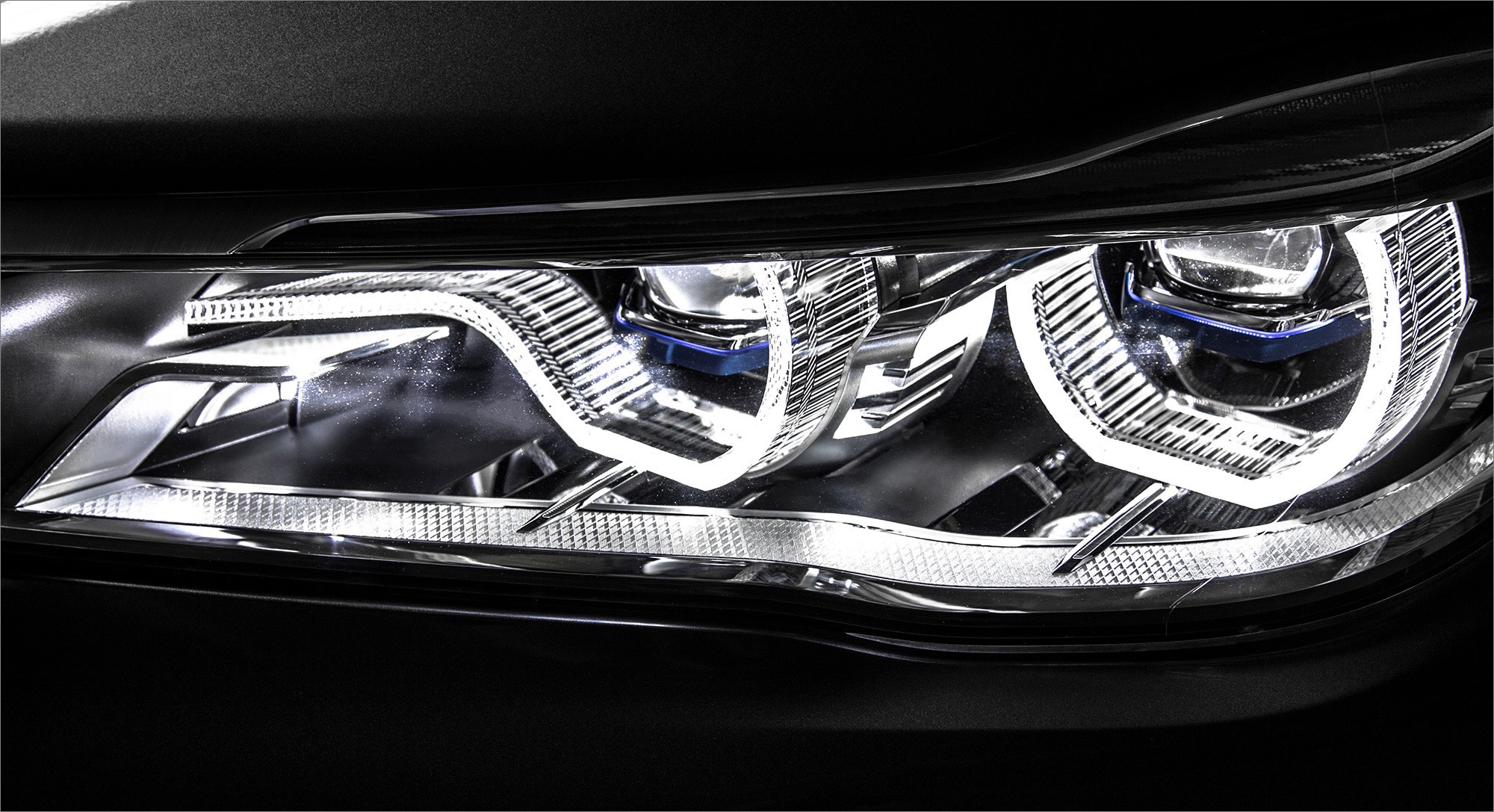
Recently, the steering wheel of an incredible monster fell into my hands, and in the first few minutes I realized that I could not do anything against the desire to write a debut publication on the company's blog. In it, I decided to tell about the most geeky "chips" of the flagship car, which hit the strings of my soul during one of the test drives. Perhaps you see some of these features every morning in your car of a different brand, but as they say, you can create completely different things from the same set of elements - let's see what happened in the car of the “seventh” series.
1 key
In my publications I try to avoid speech stamps, but this time forgive me: the theater begins with a hanger, and familiarity with any car with a key. The key 7 series of the latest generation
formed the basis for the design of the iPhone X made almost the same as that of the "space" BMW i8:
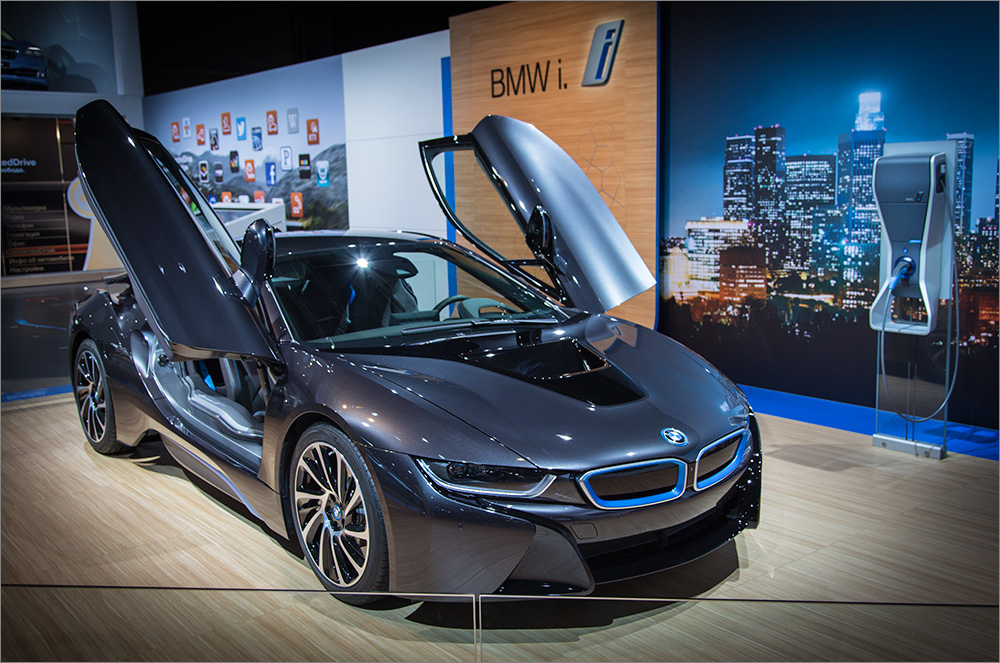
A small electronic keychain with a screen in which there is no mechanical key:

On the key are the standard buttons for unlocking and locking the car (long hold closes not only the car’s doors, but also the windows / hatches), and various information is displayed on the screen: time, date, key charge, door status and light.


The screen is touch-sensitive, so you can dedicate it - adjacent screens have the fuel level and power reserve (for the hybrid version or for the i8, the battery charge), the ability to schedule preconditioning. And in some cases there is such a “non-standard” button on the key:

She is responsible for the most unusual and impressive function, located on the last screen of the key - for remote control of the car. No, an expensive car doesn’t turn into a machine for driving, but it will be much easier to drive into a “hard-to-reach place” and leave it. For example, if you haven’t bought a spacious garage yet or if neighboring cars have blocked you in the parking lot and there is no possibility to get through the door.
It works like this: we approach the car, press the “Connect” button on the key screen, wait for the connection to be established, and after that, clamping the “non-standard” button on the end of the key, click “Start engine”. The car will start, turn on the headlights and fold the mirrors - only after that it will be possible to move it back and forth with arrows on the screen (while holding the button). The car can even taxi a little if necessary, and if there is an obstacle in front of it (for example, a pedestrian or a dog), it will stop.
It is inconvenient to do all this with one hand - accidental operation of the option is excluded; the distance should also be small (maximum of a couple of meters) - “moving” the car from the balcony will not work. Really cool feature that a couple of times had to use "not for beauty."
Of course, the car has keyless access, keyless engine start, handle lights and door locking by touching the sensor area in them.
Like any modern gadget, the key for i8 / 7-series must be recharged and the easiest way to do this is by putting it in the armrest - there it is charged via a wireless interface. Although if you want, you can always charge it via a microUSB connector, which is tightly closed on the keychain with a rubber stopper.
2. seat adjustment
Probably, in the second place you were waiting for some other feature, but I decided “in order” - I opened the car, sat down, set up the seats and mirrors, the steering wheel, and only then started up and drove off. So while about the seat.
The fact that the BMW 7 Series seat adjustments more than any other model of the company, it is quite expected. But I liked the way it was implemented. Setting up the front seats is a block of keys and sliders located on the outer side of the seat.

Each element is touch-sensitive: as soon as you touch any of them with your finger, an image of the seat appears on the main screen of the car and that part of it is highlighted in color to the switch of which you touched. As well as possible “degrees of freedom” for this segment: it is immediately clear what to press and where to move. The protrusion under the knees, forward-back-up-out, back angle, height and position of the head restraint, lumbar support, lateral support - more adjustments than in the most sophisticated computer chair. But for the first time it became difficult to get lost in this variety of adjustments. No need to explain to the passenger how to move the seat - he simply instinctively lowers his hand to the area of the buttons and after a moment understands everything. However, the passenger seat can also be adjusted from the driver’s side - it has “admin rights”
:)
Speaking about the seats, it is impossible not to mention the various heating and ventilation, as well as about massage and "vitalization". If everything is clear with massage (separately, you can choose any of the desired areas for impact, as well as one of three intensity levels), then there is such an unusual thing as vitalization in the back seats: this is a kind of interactive training (shown on the back monitor) which activity is monitored by seat sensors. Not that this is a worthy replacement for the gym, but on the way it allows you to stretch your knuckles and muscles in your office chair a little.
The rear seats are still cooler: they can be controlled not only by the buttons on the center console, but also from the optional tablet, about which later. Well, of course, they are even more comfortable - more space, all sorts of pads there and that's all.
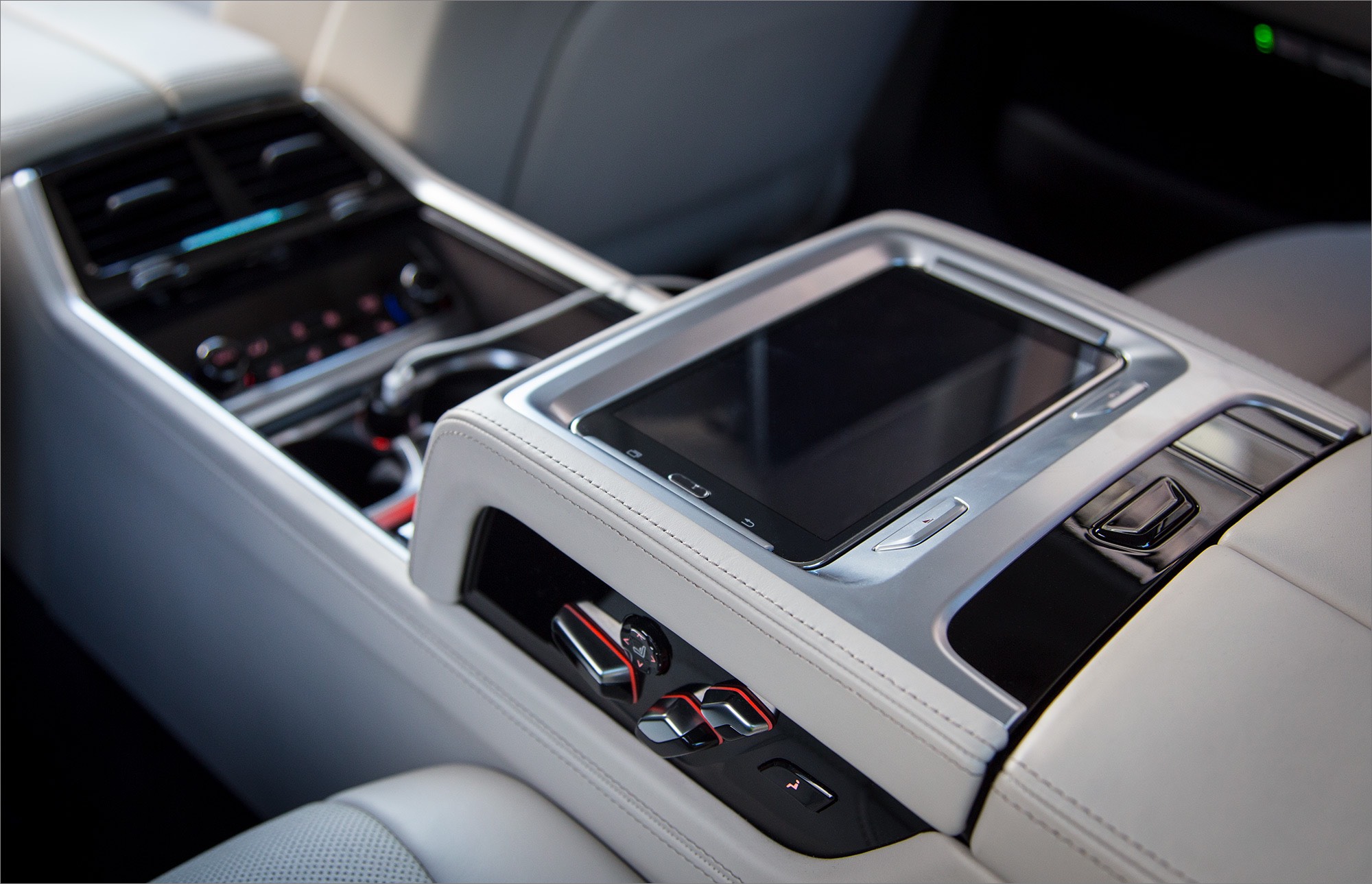
3. Interactive dashboard
To start the car, just press the button to the right of the steering wheel and the first thing that will attract attention is the interactive dashboard, which is located behind the wheel. As with the inclusion of many other gadgets, there is a spectacular animation and sound, but here it’s all in the theme and looks pretty cool.
The dashboard is a single large screen (12.3 "diagonal), which displays all the information depending on the selected mode, settings and external conditions. The biggest changes in the appearance of the panel are made by driving modes (Sport - Comfort - Eco - eDrive): in sport this is an aggressive-red palette, in the rest - peaceful blue.

Speedometers, tachometers, other indicators - everything is different everywhere, there is plenty to choose from. All icons are displayed here, be it system messages (for example, the check engine), warnings (low fuel or danger of collision) and some auto settings (for example, high beam or cruise control).

And a little more space is reserved for displaying information about some road signs: the camera (in the area of the rear-view mirror) recognizes some road signs (speed limit, prohibit overtaking and the end of its zone, the end of the zone of all restrictions, as well as temporary signs), optionally compares them with the internal base and displays this data to the driver. If the speed in this area is exceeded, the dashboard hints about this: the speed limit and the current speed will be displayed on the speedometer in red. All this is useful to those who are not attentively looking at the signs, although everyone can miss the mark.

Despite all its “figure”, the dashboard is perceived as “analog”: probably due to small semicircular plastic inserts around the tachometer and speedometer. Inside them, the drawn arrows feel like mechanical ones - very realistic graphics, no slowdowns (including at 40 degrees of frost).
4. Projection display
Nowadays, few people will be surprised by the projection display (HUD, HeadUp-Display) - for the first time it appeared several decades ago, and now many cars are equipped with it. And if not, you can buy a separate device or even download the application on a smartphone to put it under the windshield for projection - it turns out to be a rather strange thing, but as an option.
What is it for? In order for the driver to read useful information without being distracted from the road, he simply continues to look ahead, and the information is projected directly onto the windshield. When people see this option for the first time, as a rule, it surprises them a lot - it looks really a bit unusual.
In BMW, quite a lot of things are available for projection, of the most obvious, the speedometer reads, as well as the current speed limit on this part of the road (if it is exceeded, the speedometer reads red.) If the navigator is turned on, then navigation will be displayed on the glass: either a directional arrow with distances, or a full route (in some case, with diagrams of highways and junctions, as well as directions from which row and where to go).
If the phone is connected, then you can look through the address book or the list of tracks (from the phone or any other supported media) on the windshield.
Also, the cruise control information is displayed on the projection display: the current set speed and distance to the vehicle in front. And, of course, all sorts of "mistakes": a small amount of fuel, warnings about the occurrence of obstacles (the car can brake itself to avoid an accident, if it understands that you do not follow the road) and much more.

The position of the projection on the glass can be adjusted - move it to the side or raise-lower. And if you do not like this option, you can disable it in the settings.
5. Touch dashboard and main screen
It was difficult not to notice the increased level of "sensory", which appeared in the car of the new generation. In addition to the seat adjustment buttons, it is full of other sensory elements.

The largest - the main screen - sometimes poke your finger faster than twisting the multifunctional “washer» iDrive. Which, by the way, is also sensory (as in the previous model of the seventh series and many other models of the company) - you can write letters in the navigation or in the address book directly on it and it recognizes them (it works quite well, but you need to get used to the “font”) .
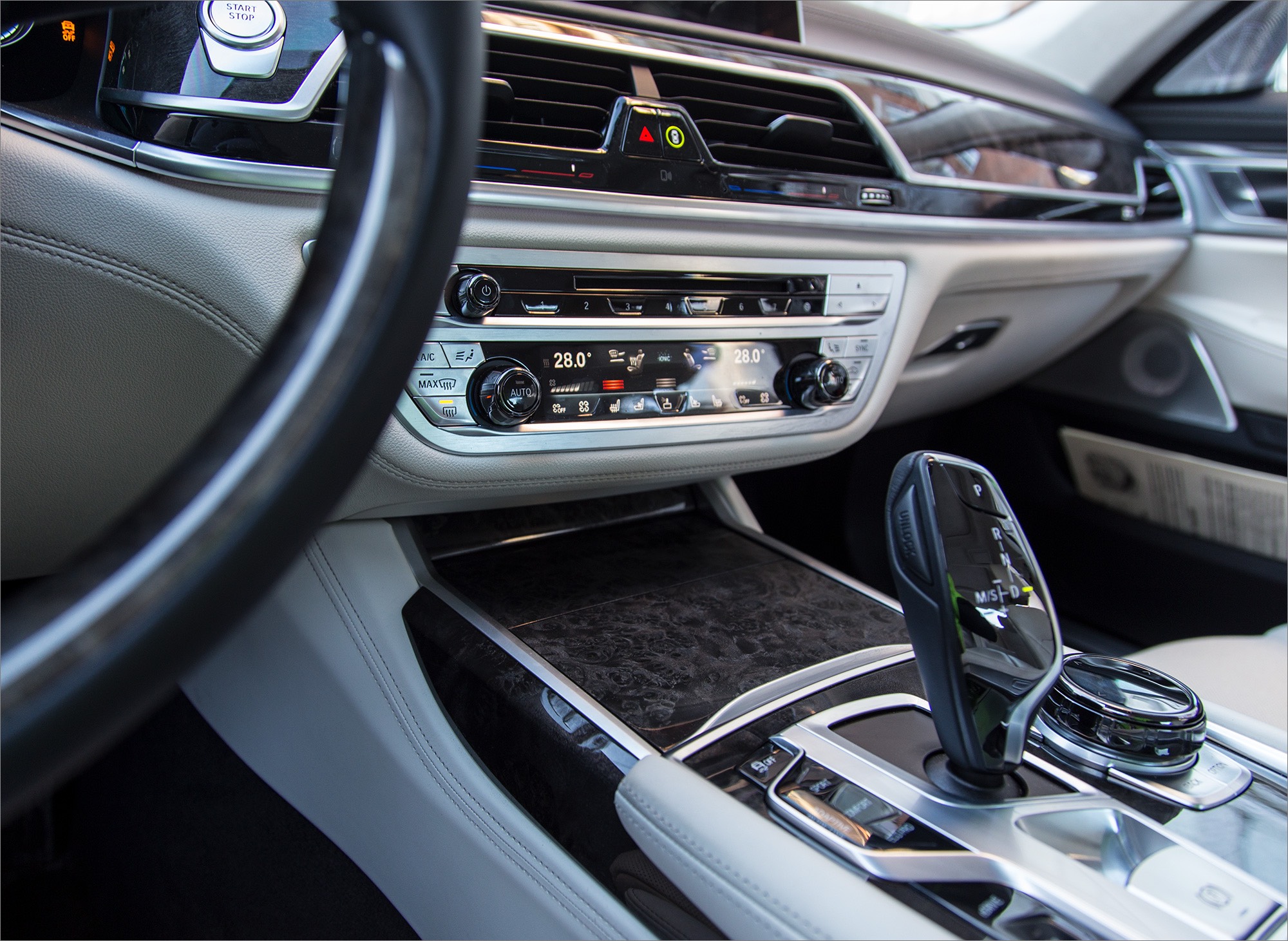
Touch steel and climate settings: ventilation in the cabin, heating and cooling, air ionization and its aromatization. Yes, instead of buying “Christmas trees”, you can add special flavoring “cartridges” (with chips, everything you like) to the expense items, which are inserted into a special compartment in the glove compartment.
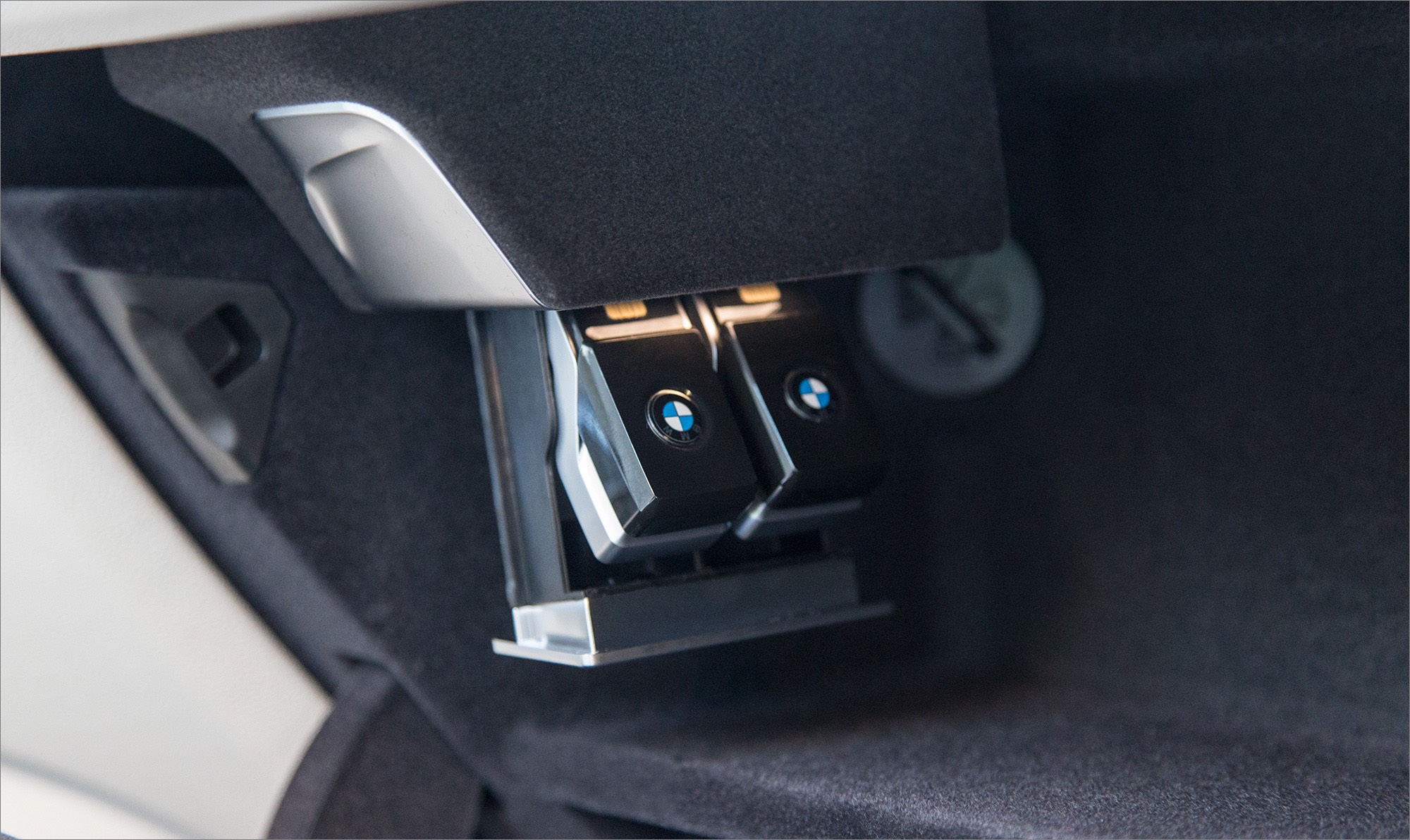
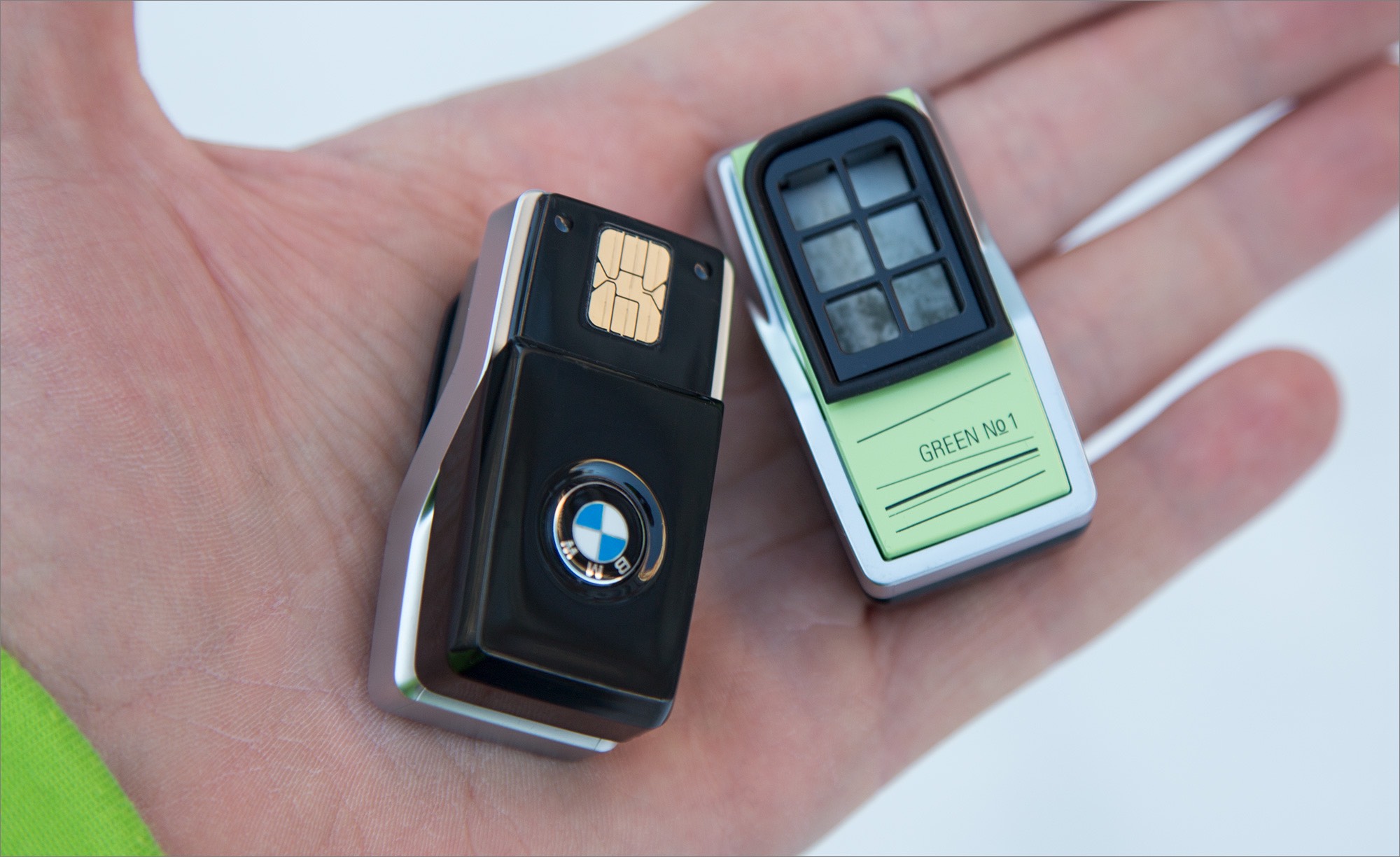
A choice of 8 light flavors is available, but at a time you can insert no more than two cartridges (you can switch them and change the intensity directly from the main screen).

A number of music player buttons have also been added (1-8, which previously “clicked the channels”) - they can zabindit various functions of the car, and touching your finger to them will show a hint on the screen. Well, the "fast" adjustment of the heating and cooling of the air is again sensory.
To put it simply, it is better to wipe the dust in the cabin when the car is turned off, otherwise everything that is included will turn on
:)6. Gestures
There are touch buttons, gestures and voice control in the same place
:) And if voice control has been around for a long time (not to mention all kinds of Siri and Cortana), then gesture control is a relatively fresh feature.

BMW was the first to propose the idea of tying the entire car to a joystick, inventing iDrive ... and now he teaches the car to understand human gestures. In the BMW 7 series there is support for 6 different gestures, recognition is made by a special built-in module in the area above the gear selector (under the lights). For example, you can twist your finger in a clockwise direction in this area and then the volume will increase, and if counterclockwise it decreases. The “blinked out” gesture allows you to switch the track and swipe to the sides to accept or cancel the call. There are other gestures, they can be used for certain actions or disabled. But there was no one indifferent to the “loudness knob”!
7. Camera panoramic view
A rearview camera has long surprised no one - it is in almost any car, and if not, then you can buy it in any stall or order it on Aliexpress for $ 10 per kilogram.
Many rear-view cameras can draw trajectories along which it becomes clear where the car will arrive, depending on the current steering turn. This feature is especially useful for beginners who have difficulty parking "in the garage".

Some cameras are able to impose on the image readings PDC - so that including in the dark it was clear which side and what is pressing.
Very few cameras (literally some brands) are able to “glue” the image from several car cameras to the “top view”: in real time you can see your car on the screen like in old versions of GTA, and around it all the rest of the situation - curbs, flower beds, cars and so on. People who see this for the first time are often asked: “where is the camera?”, “How does it shoot from above, from space, eh?”, Etc.
But the engineers from BMW 7 decided to go even further and made the view from the cameras of the car three-dimensional, panoramic and with a three-dimensional model of the car in the center: this is not an old GTA, but practically a garage in NFSU. You can look at the car from above, or switch (by touching the screen) to the view from either side. Moreover, you can control this camera with gestures. To implement all this, it took 4 cameras: one at the front, rear and in the lower parts of the side mirrors.
It is strange that the model of the car on the screen is not painted in the color of the car - if the owners of white and silver cars still may not notice the savings on ink, then all other owners will sooner or later notice a discrepancy
:)But the size of the main screen is such that it can simultaneously display an image of the top view and the image from the rear view camera - in this case even a novice driver can park in the most secluded place. And when the gear selector switches to position P, the opening paths of the doors will be drawn in the view from above - it will be clear from them whether you push the door behind the fence or not.

The only thing that I personally do not like in all these cameras is that they are constantly “open”: they get dirty instantly (especially the front one). After all, there are technologies that allow them to hide (even BMW itself did just that), why don't they do it now ?!
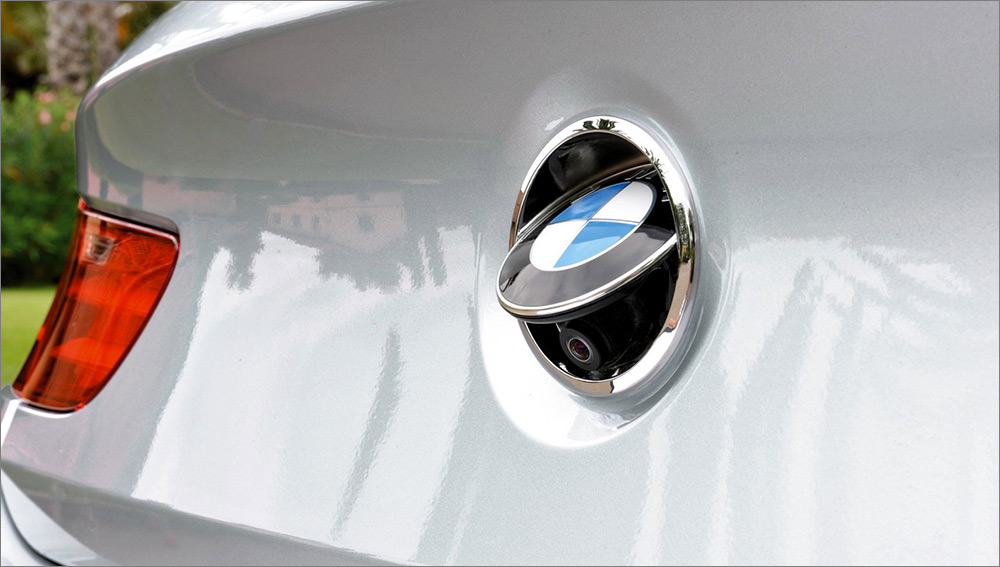 An interesting fact: you can
An interesting fact: you can “twist” the car and the situation around it, including remotely - through the BMW Remote App (if the Remote View 3D function is activated in the vehicle settings). True, in Russia, this feature will work, apparently, only next year.
8. Laser lights
While some manufacturers are just mastering LED optics, BMW is honing something new and really cool, namely, laser headlights. For the first time, the technology publicly
lit up in 2009 on the concept of the same i8 concept, and later migrated to the BMW 7. These headlights can not be met so often, but even outwardly, they are not confused with anything - they give characteristic blue stripes.
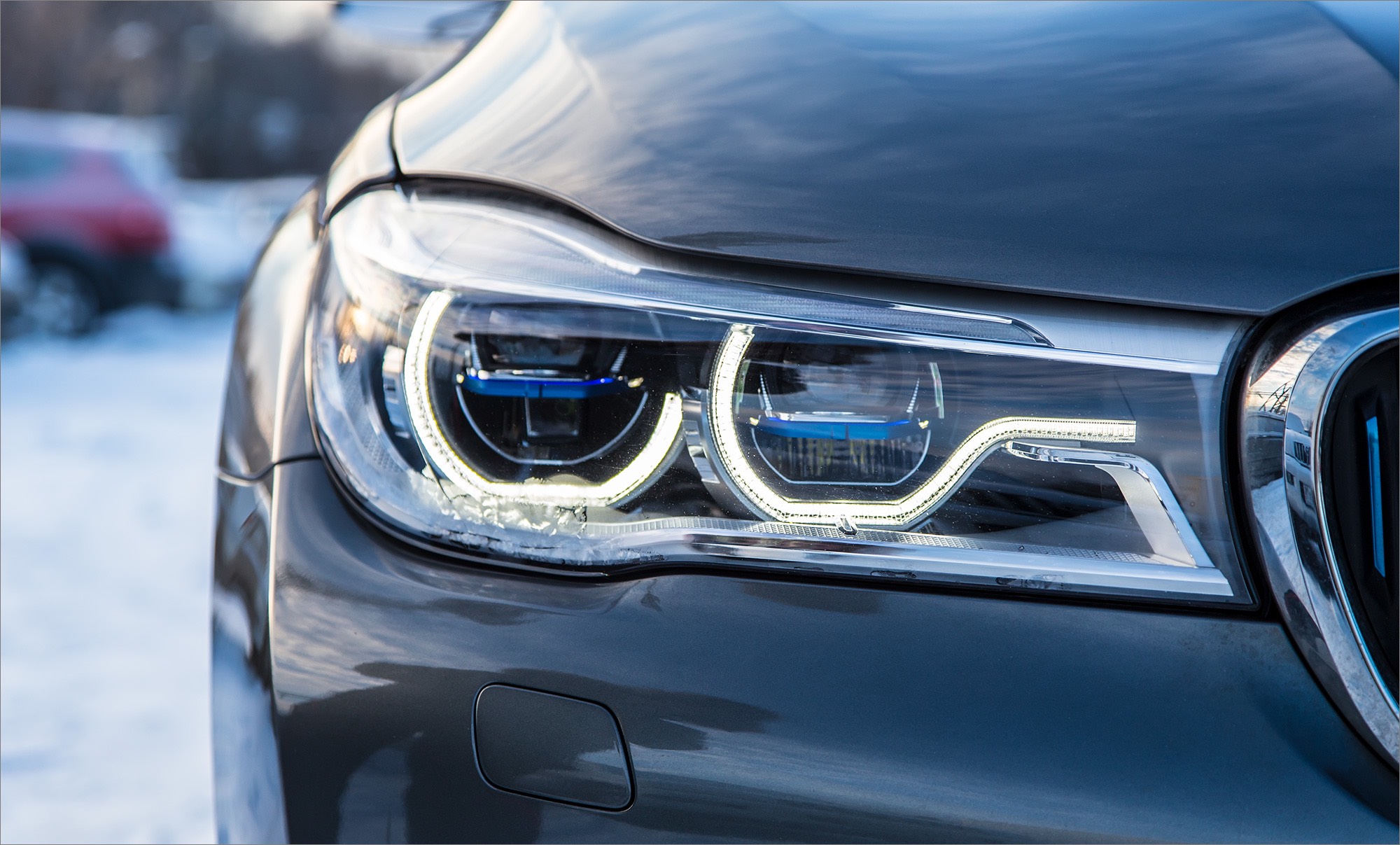
Despite a certain amount of marketing in the title, the lights are quite a laser. But it is wrong to think that the lasers themselves light the road - they only shine on the phosphor, the light from which breaks through the optical system 600 meters in front of the car. At 600 meters, Karl!

True, it is important to note that "lasers" work only when the high beam is on and only at speeds above 70 km / h, that is, mainly on the track. In urban conditions, the usual low and high beams work, which, however, shine very well, and the “far blink” resembles welding) Adaptive headlights, that is, “light up” in the direction of rotation - this allows you to further illuminate the space for maneuver, which is very convenient.
And, of course, there is an automatic high beam here (the BMW Selective Beam system): if you are driving on the highway at night, then you do not need to worry that you will dazzle someone - the car’s KAFAS camera will detect oncoming or passing cars (up to three units) and will give instructions to carefully “place” it in the “light pocket” of its searchlights. Incredibly comfortable over long distances.
→ In more detail about this technology on Habré already
wrote .
9. Assistants
Surely many of you watched the Pixar cartoon Wall-e, where fat little men plow through space and are not able to even move - the assistants do everything for them. BMW is making efforts to move in this direction
:) There are quite a lot of different assistants, some of them are aimed at improving the level of safety, some of them are aimed at increasing the pleasure from the process of driving and comfort in general. Here are just some of them:
- Drive Assistant plus - the most sophisticated assistant available, is a symbiosis of several assistants, whose main task is to provide the most comfortable semi-automatic ride. This is not straightforward autopilot, like in Tesla or Yandex’s “Prius”, namely, assistant: there is active cruise control (when not only the set speed is maintained, but when speed and distance to the car ahead is analyzed; it operates at speeds up to 210 km / h) with Stop & Go function; retention within the lane (the car itself steers, if necessary) and warnings about leaving it; protection from side collisions, detection of pedestrians and cross-moving vehicles. A very useful option that works for the safety of both the car and those around it.

- Assistant to hold the car in the band. Useful option, especially for those who like to "pozalipat" on the phone behind the wheel (do not do that!). If the car crosses the markings of its lane without a turn signal, then the car signals this (including steering vibration). And if the turn signal is on, the next assistant may work.
- Assistant protection against side collisions. — « » — , : , - .

— . , . BMW 7 — , . , «». , , , «», , .
«» . , , .
 :
: ( 5 ) — ( ) (, ).
10.
( ) Executive Lounge, 4- -, . — , , , . — , ). .

, «» — . — . — , .
:)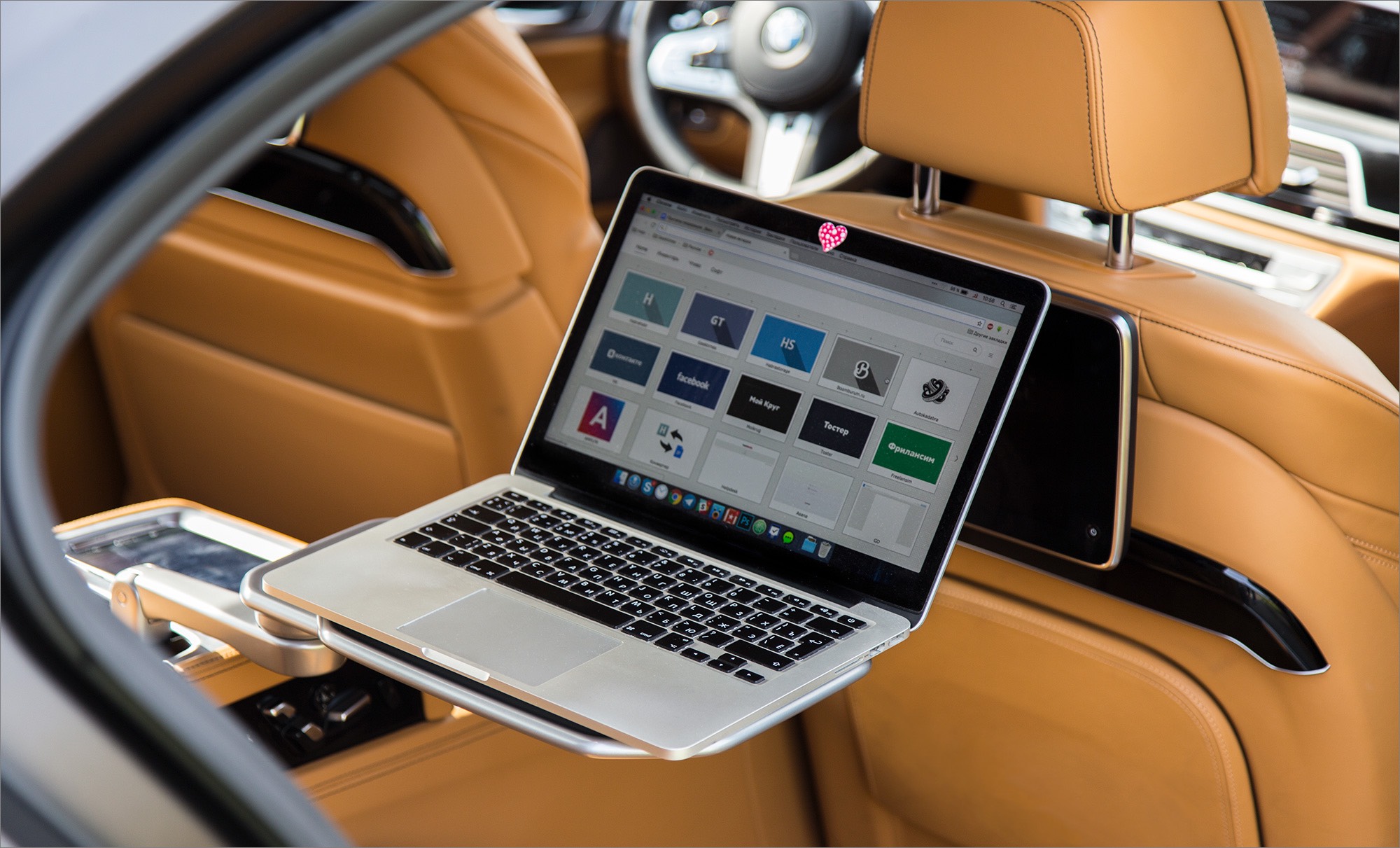
, — . ( ), . , , «» — , ( ).
11.
, , . 7- Android-, — Samsung Galaxy Tab 4, , , . : , , «» «». , , .

, — . :
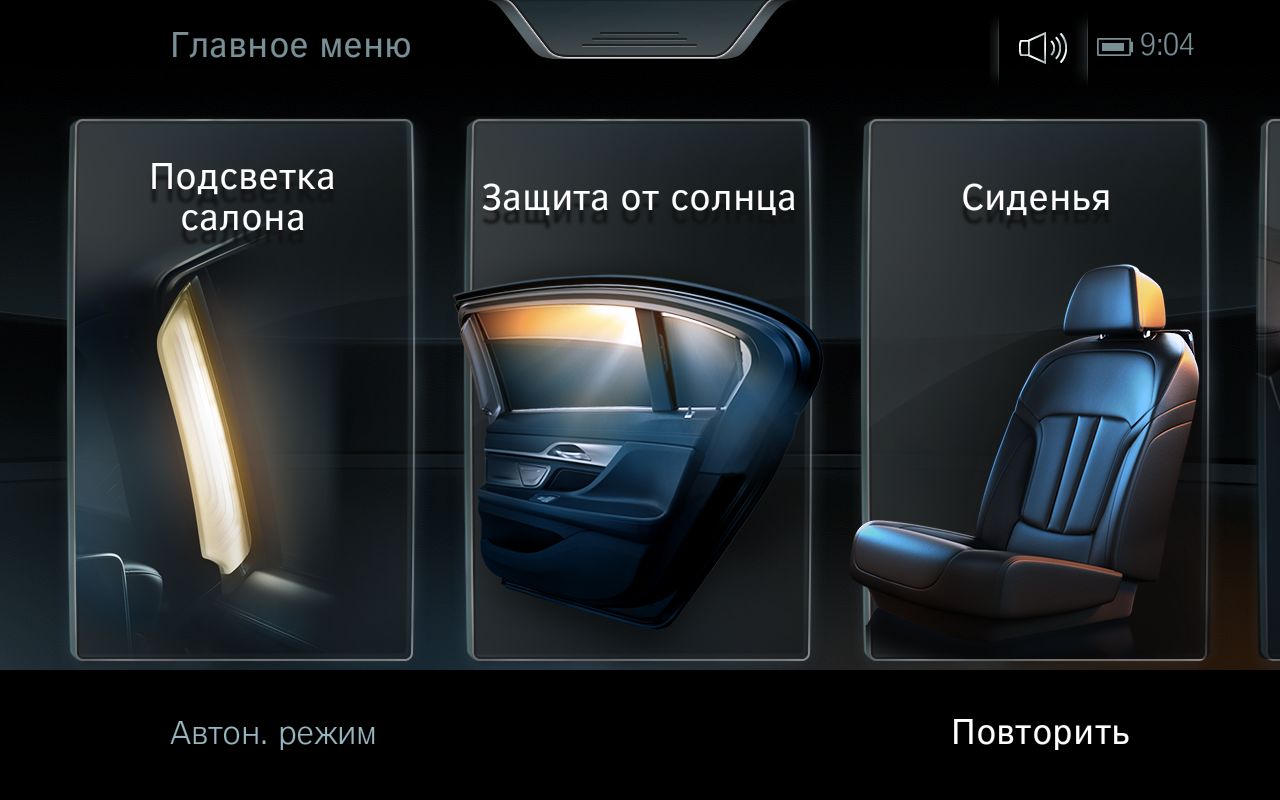
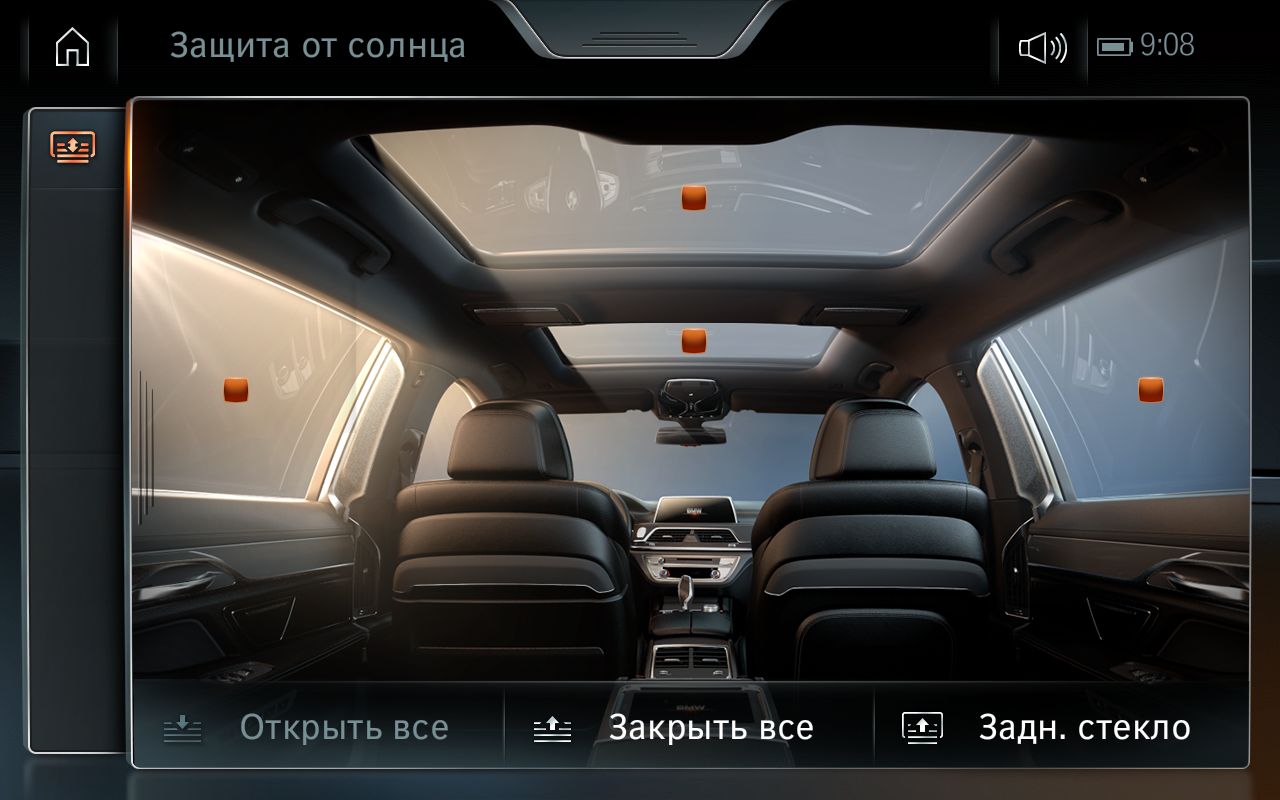

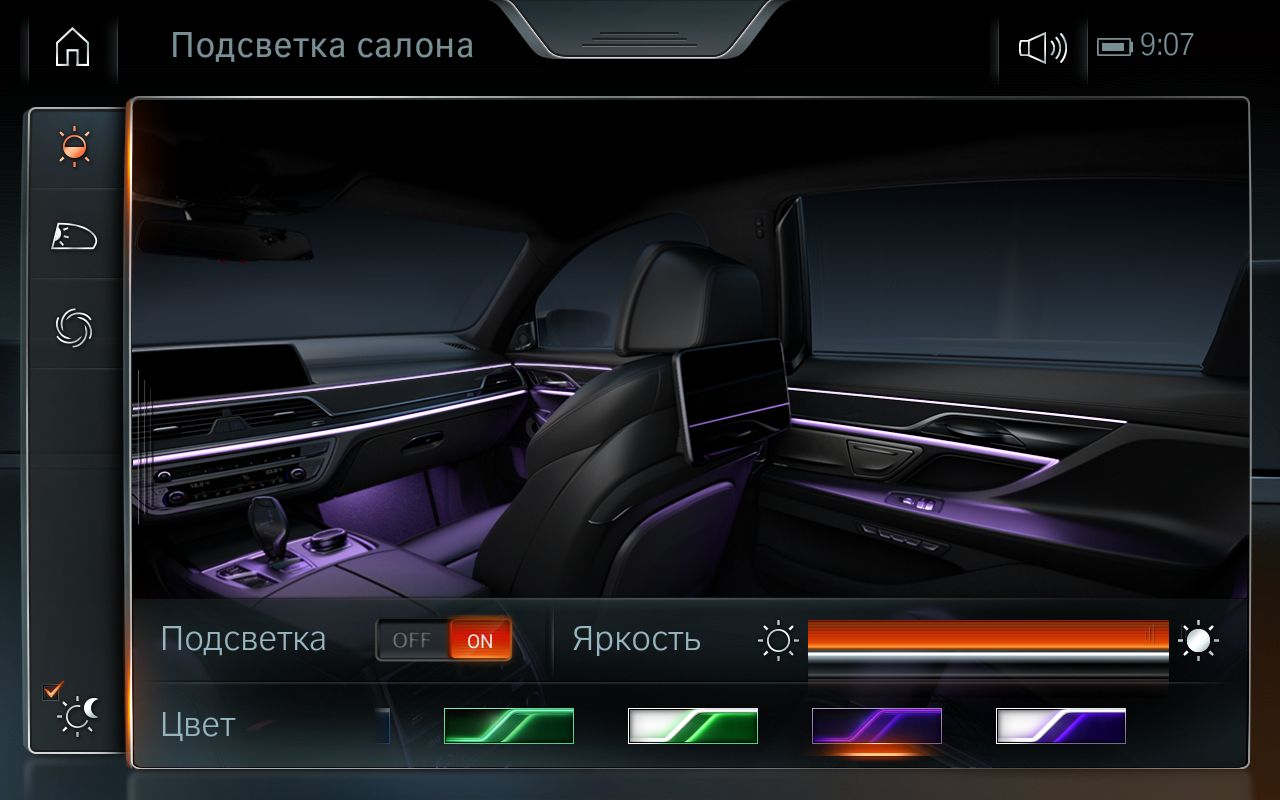



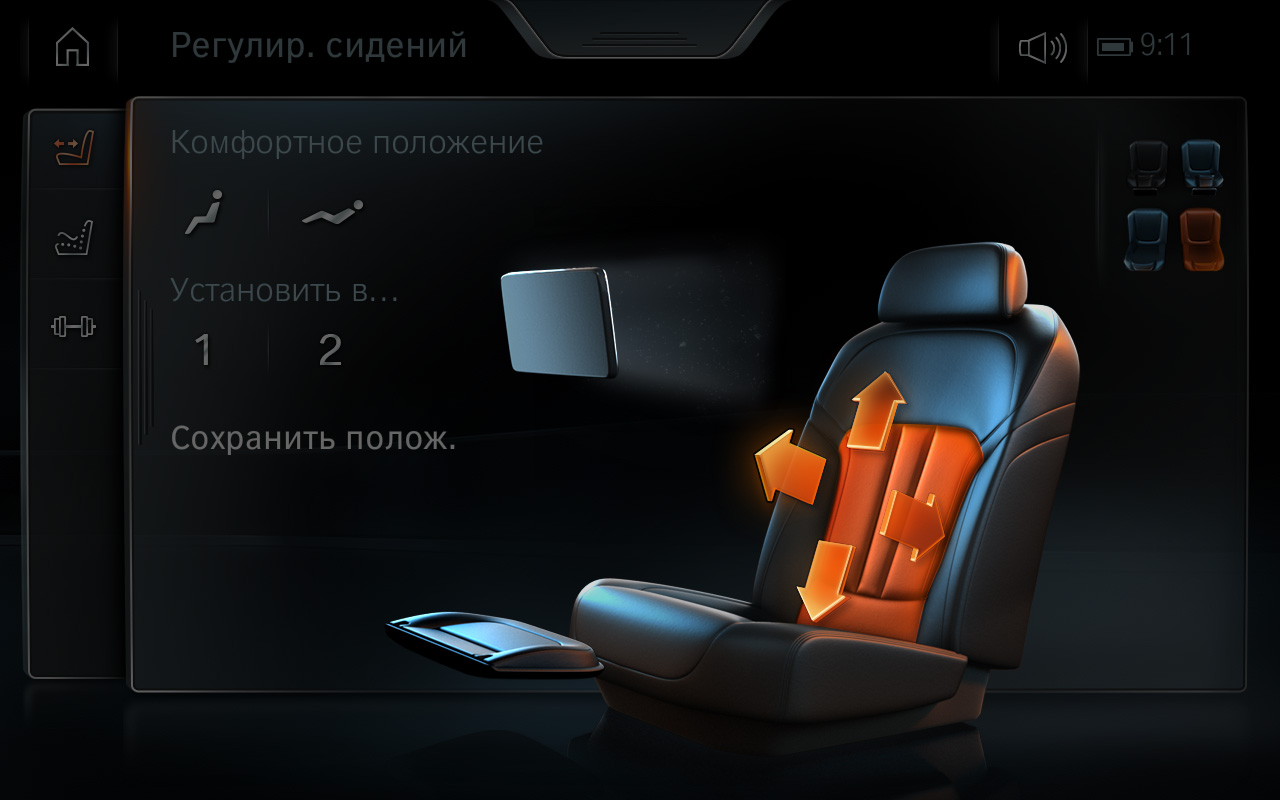
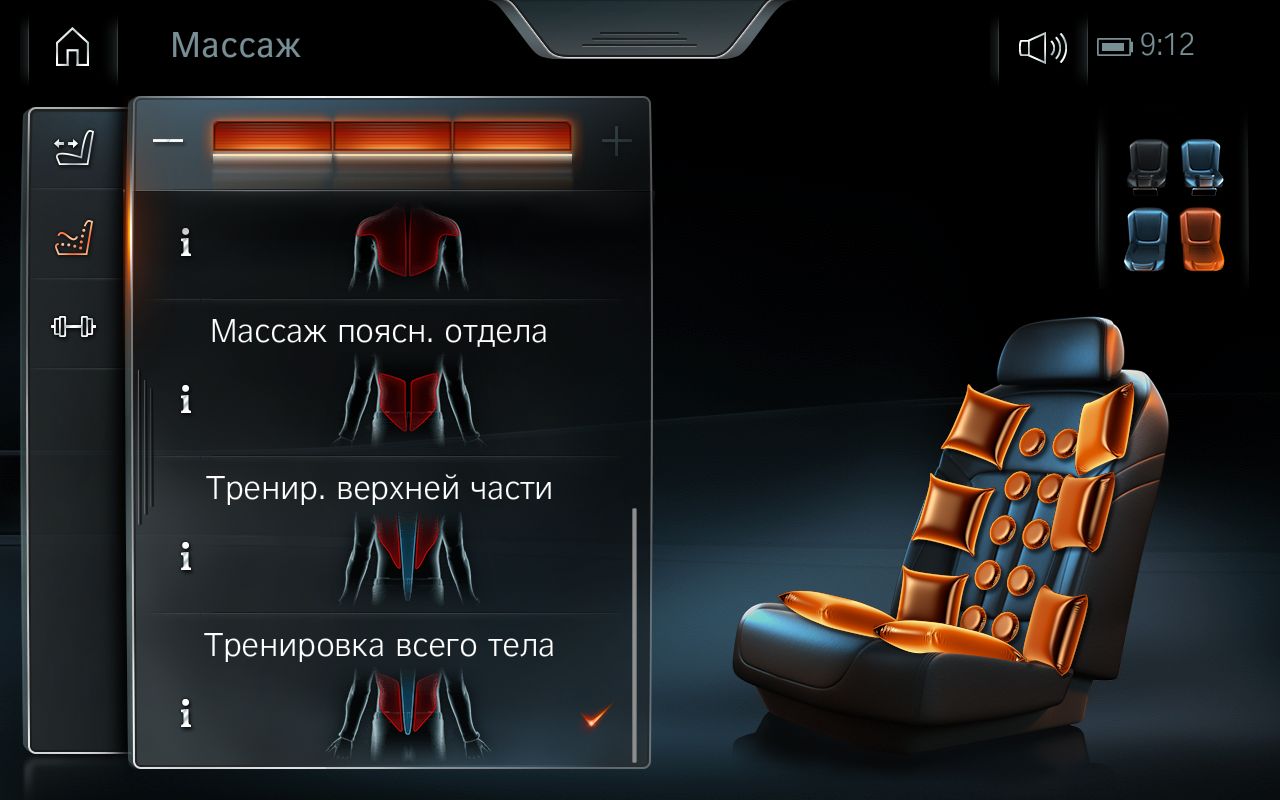
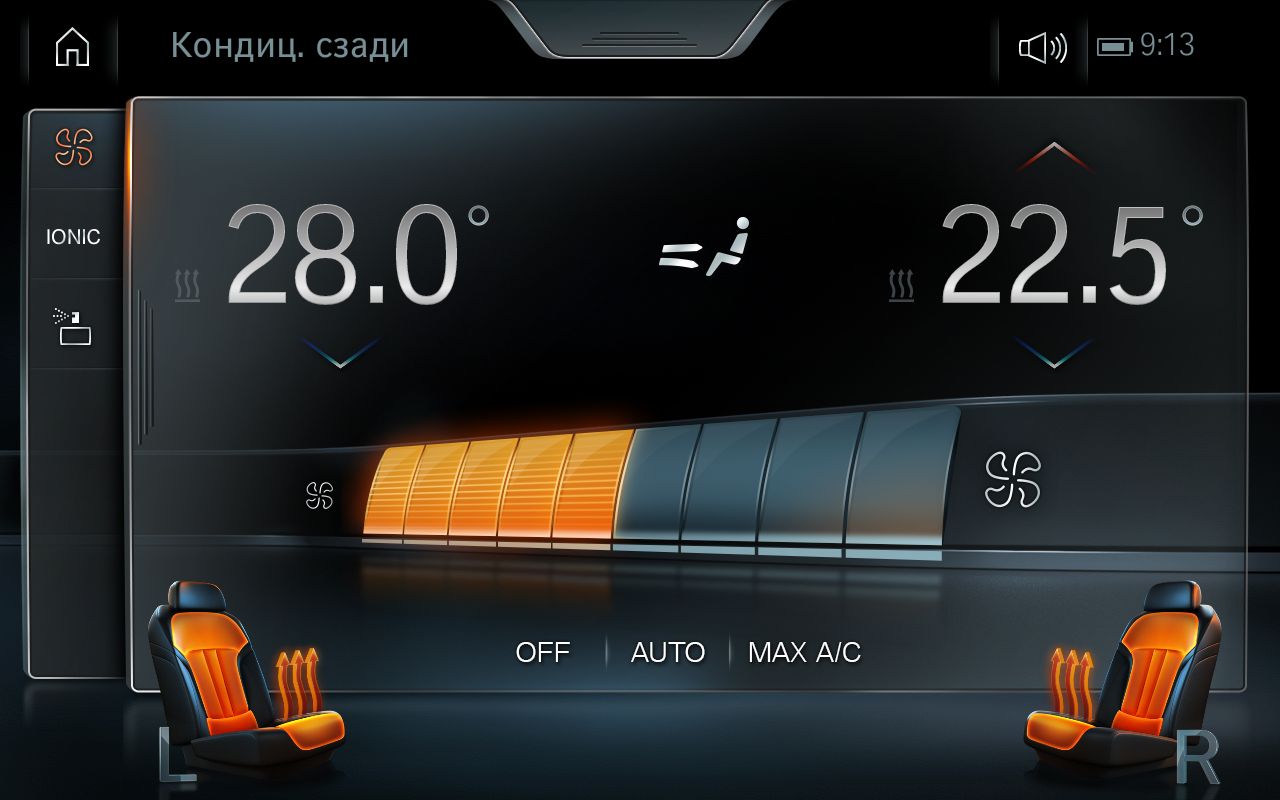
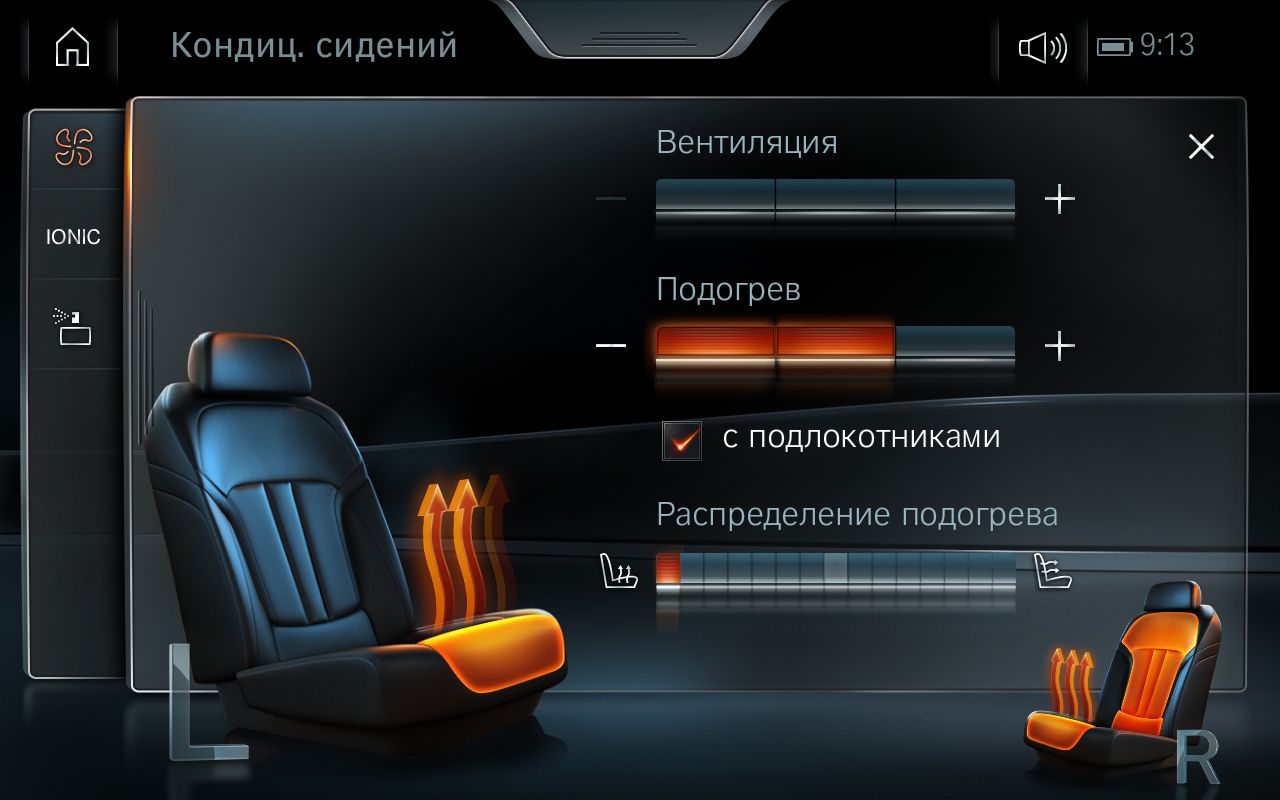

, : (, ), , -, ( «»), , , , . , «», .
, 1 , 100 :
, - SIM- LTE Wi-Fi-, -: ( ) ( RTTI) — , ., . , , SIM- — ( ) BMW ( !). SIM- ( ) — , BMW Connected Drive, .
12. BMW ConnectedDrive Apple CarPlay
, BMW ConnectedDrive — , « » . , , , , . CarPlay
:)13.
, … . , « ?». BMW 7 , . (xDrive):
730d — , , : , , , . 6- 3 — 249 , — 620*. 5.8 , 4.3—5.7 . .
740Le — «» . , , — , 4- TwinPower Turbo 2 ( 258.., — 400 *) eDrive (113.., 250*). , , , «» 5.3 .
eDrive , , — 30 ( ). , , ( ) - , ( 9,2 · ).
(230) : , , .
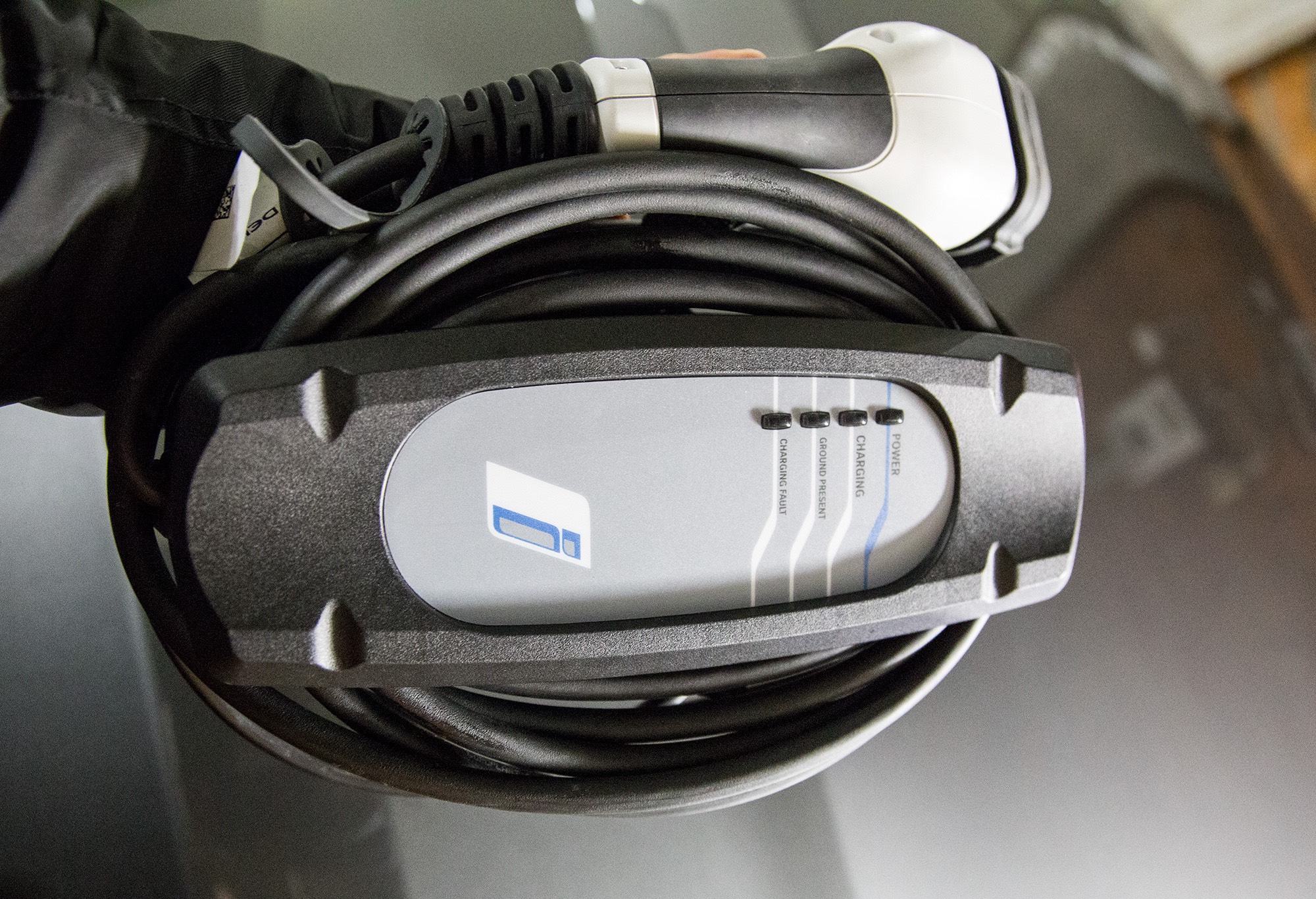
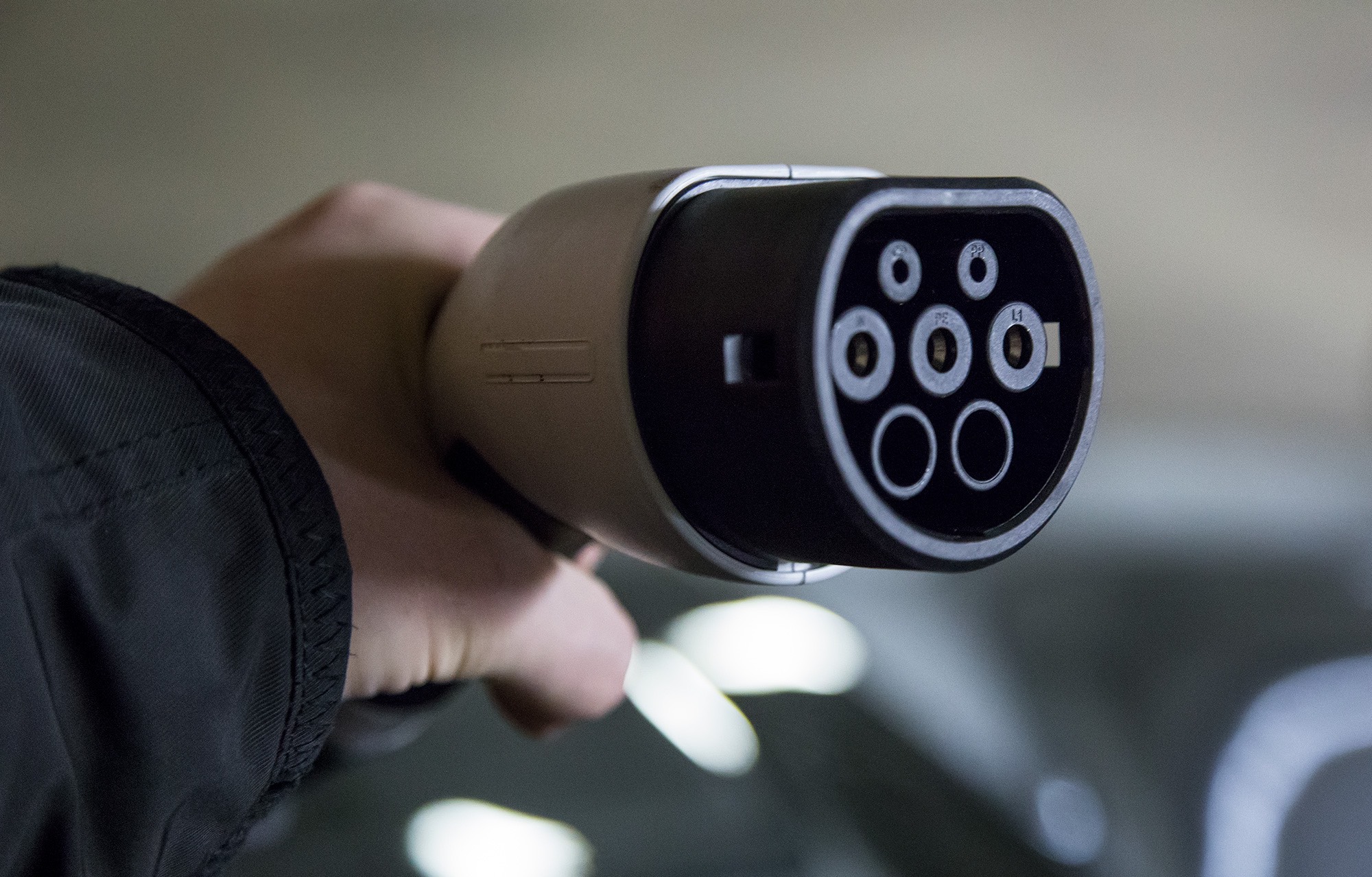


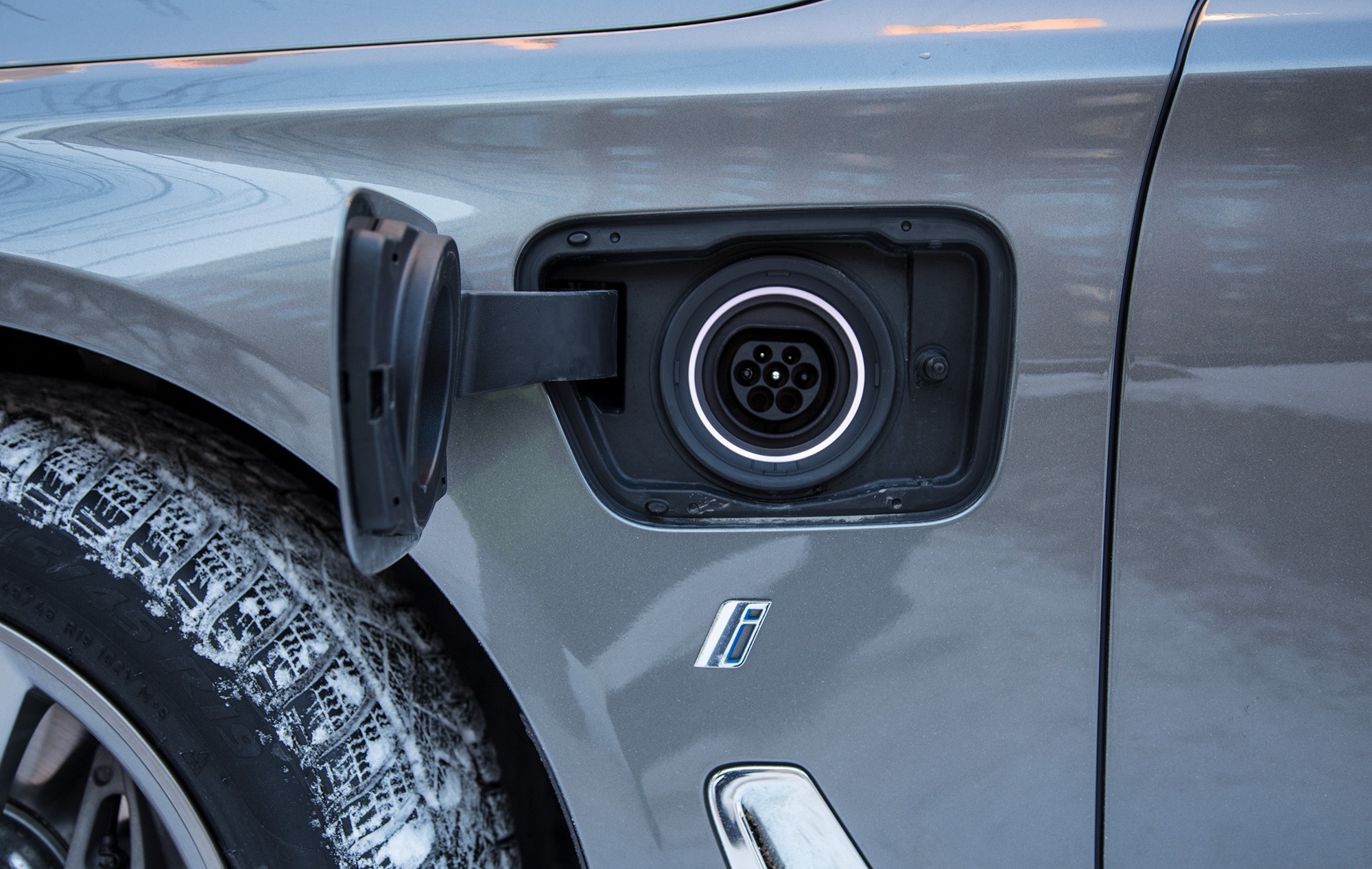
, , 2- . , 2- , . , : «» 6. , : 740Le ( ) 2.3 — , , , .
:)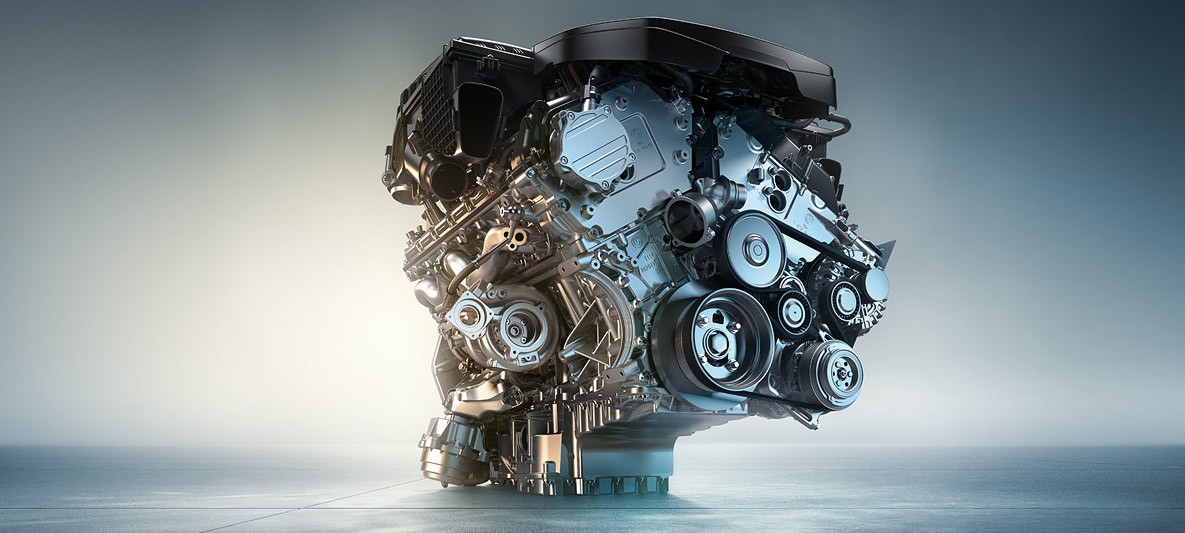
M760Li — - , ) Powered by ///M… V-… 12- M Performance TwinPower Turbo… 6.6 … 2 … 610 , 800*… 3.7 … . 12.6 . .

, BMW, . , , … ? — , V12, . , , , , , 100 .
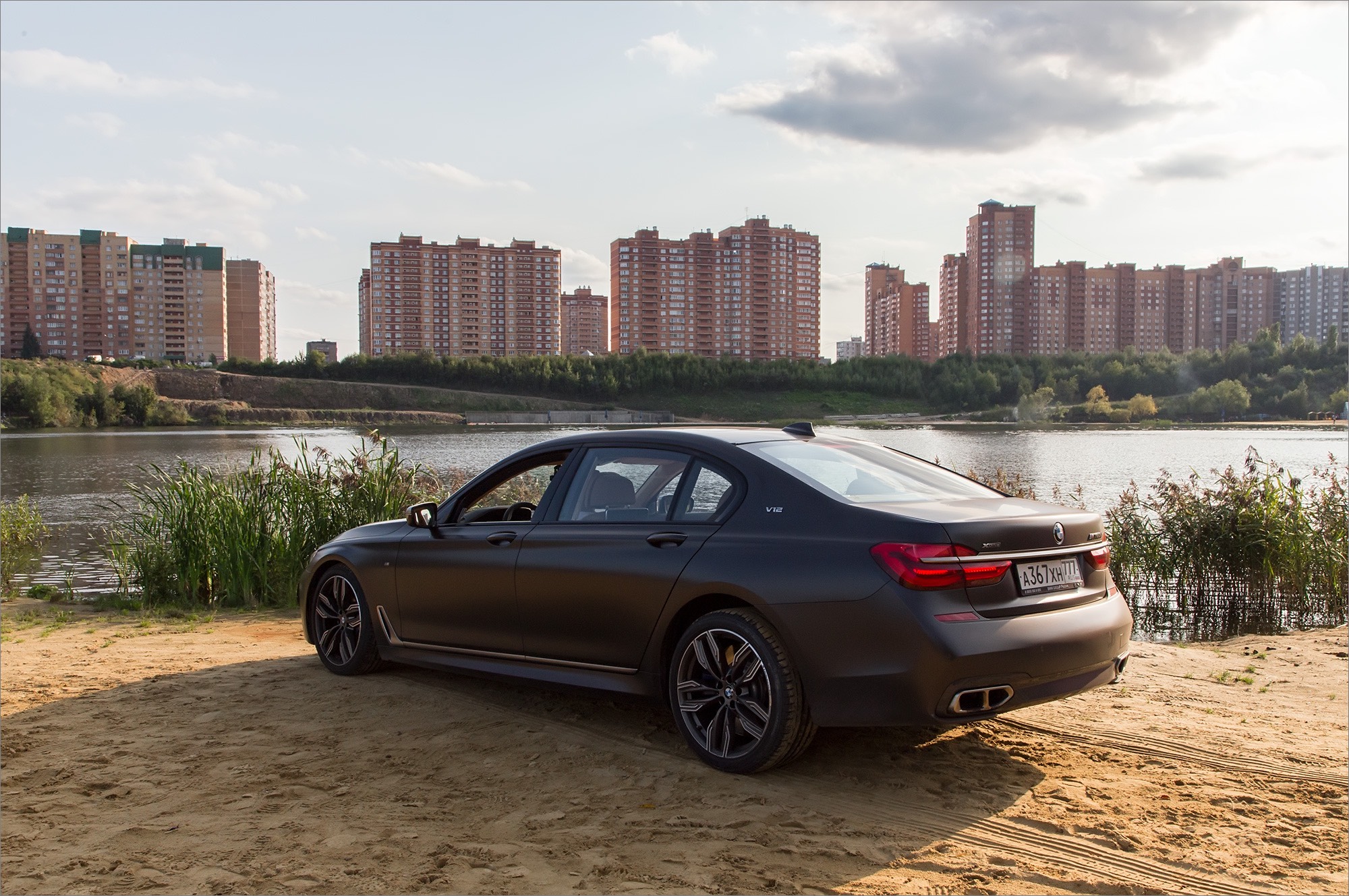
The end
— , , , — , NFC- , ConnectedDrive CarPlay, , , , .. « », .
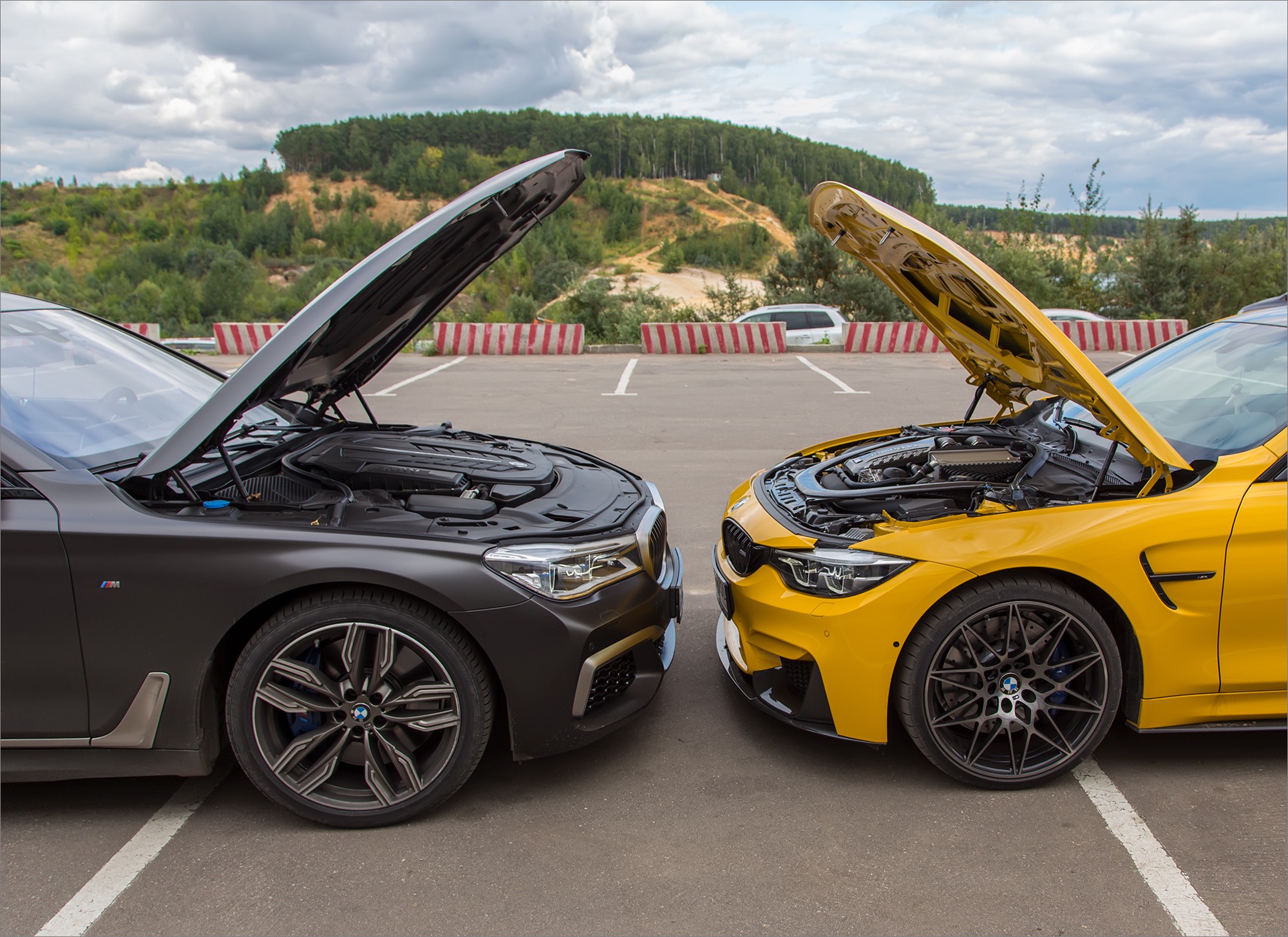
BMW 7- — , , , , . , , , , , , (, , BMW 7 series — ,
:)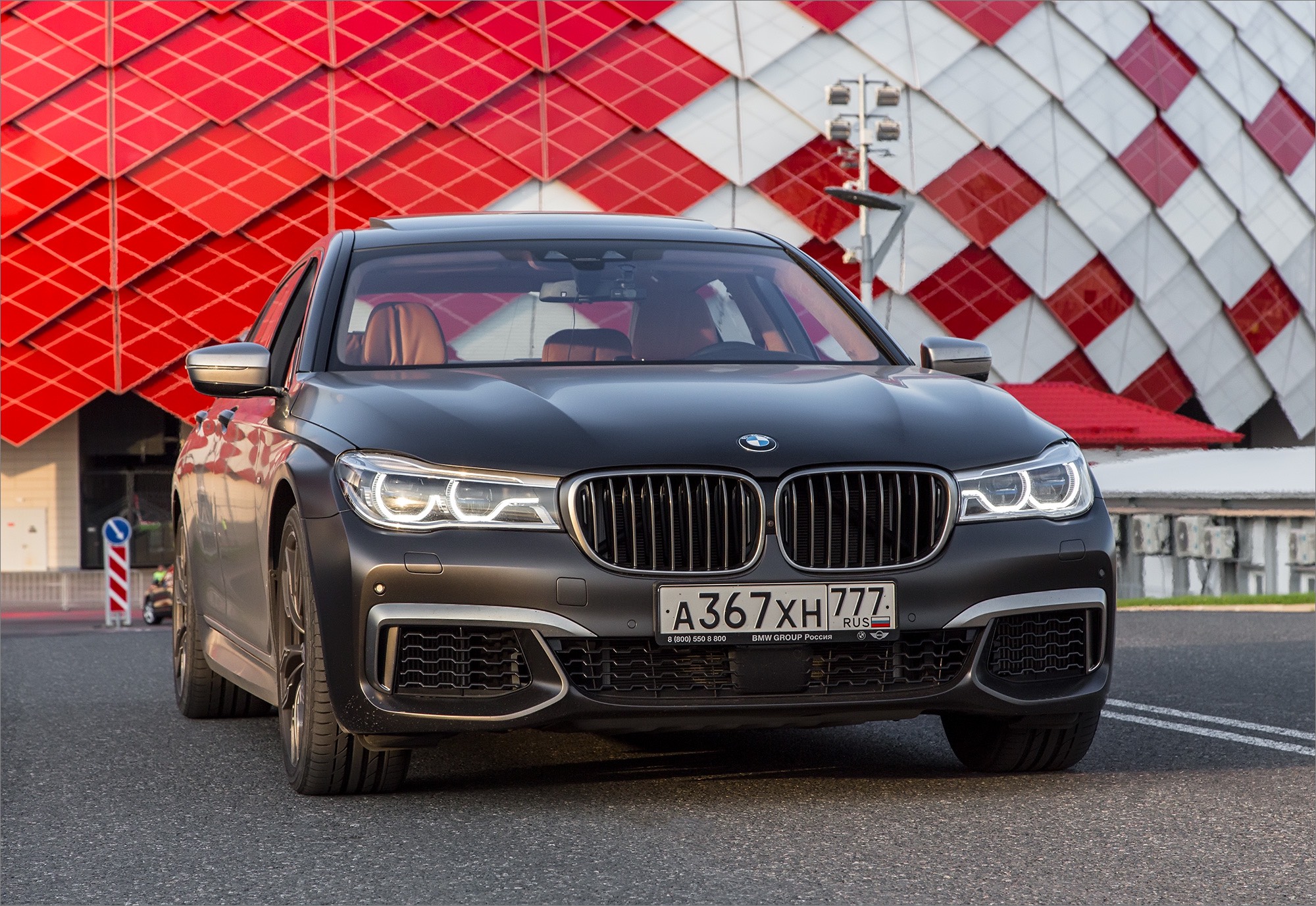
, BMW — , - . — , , .
Thanks for attention!